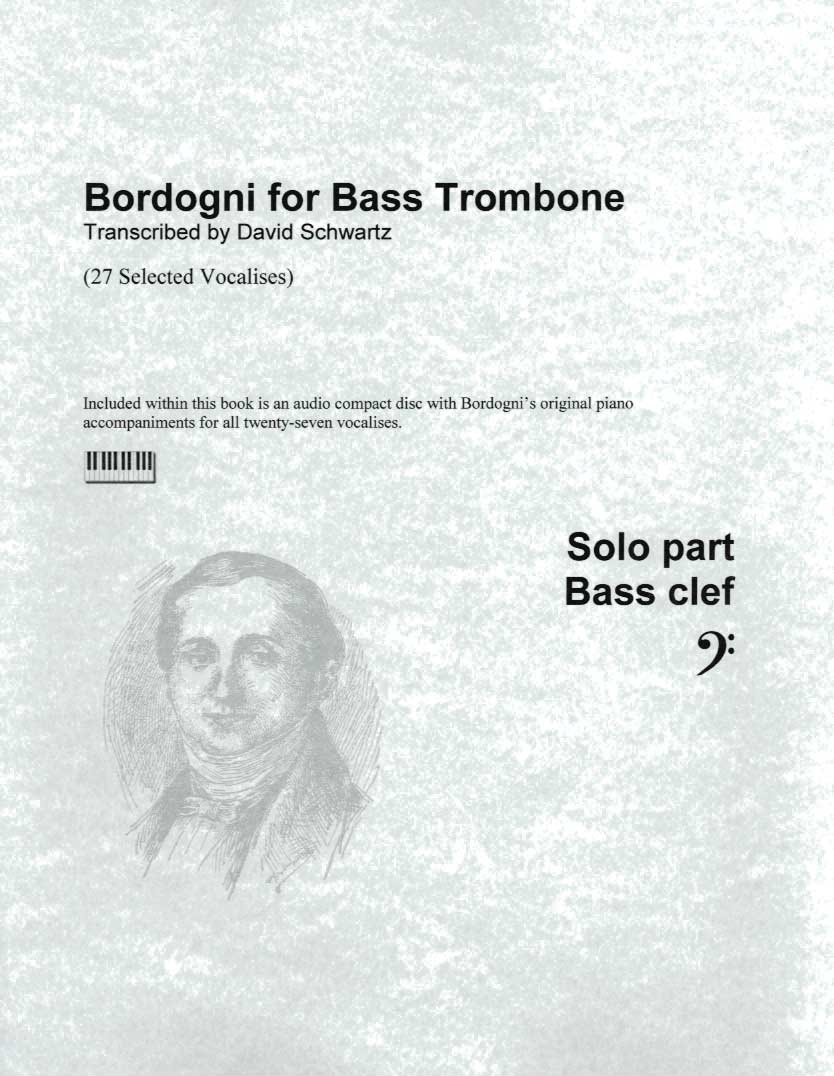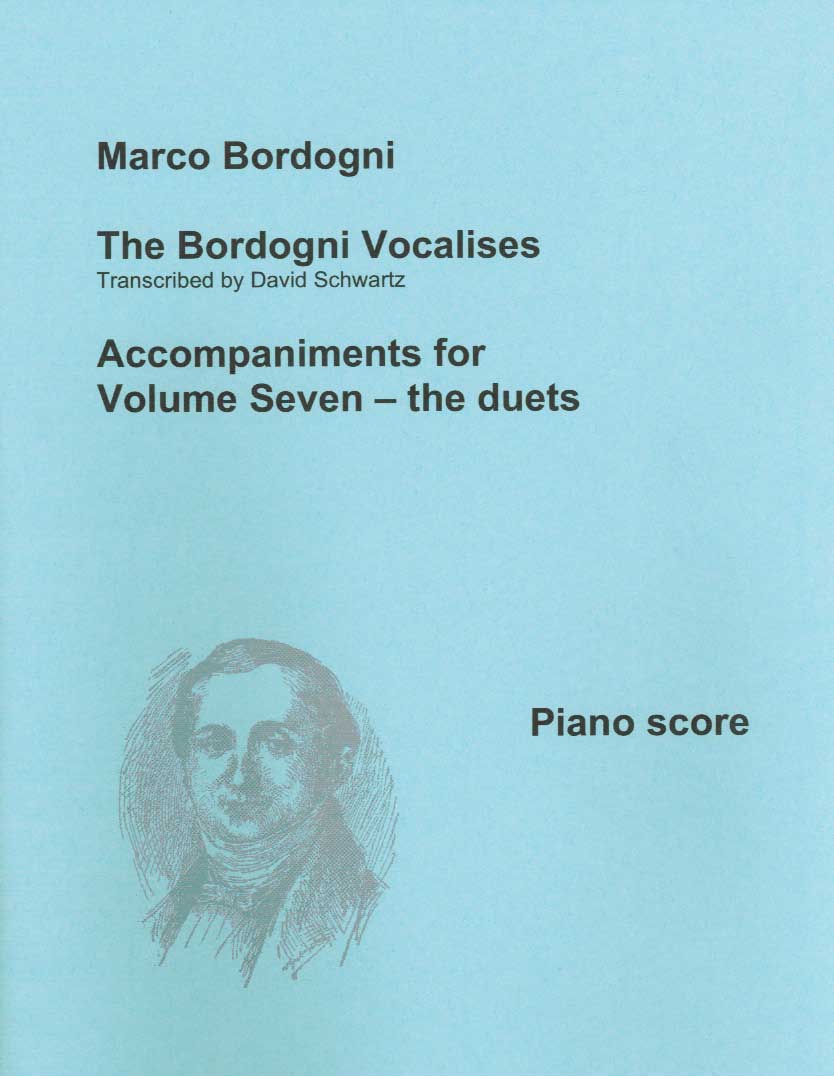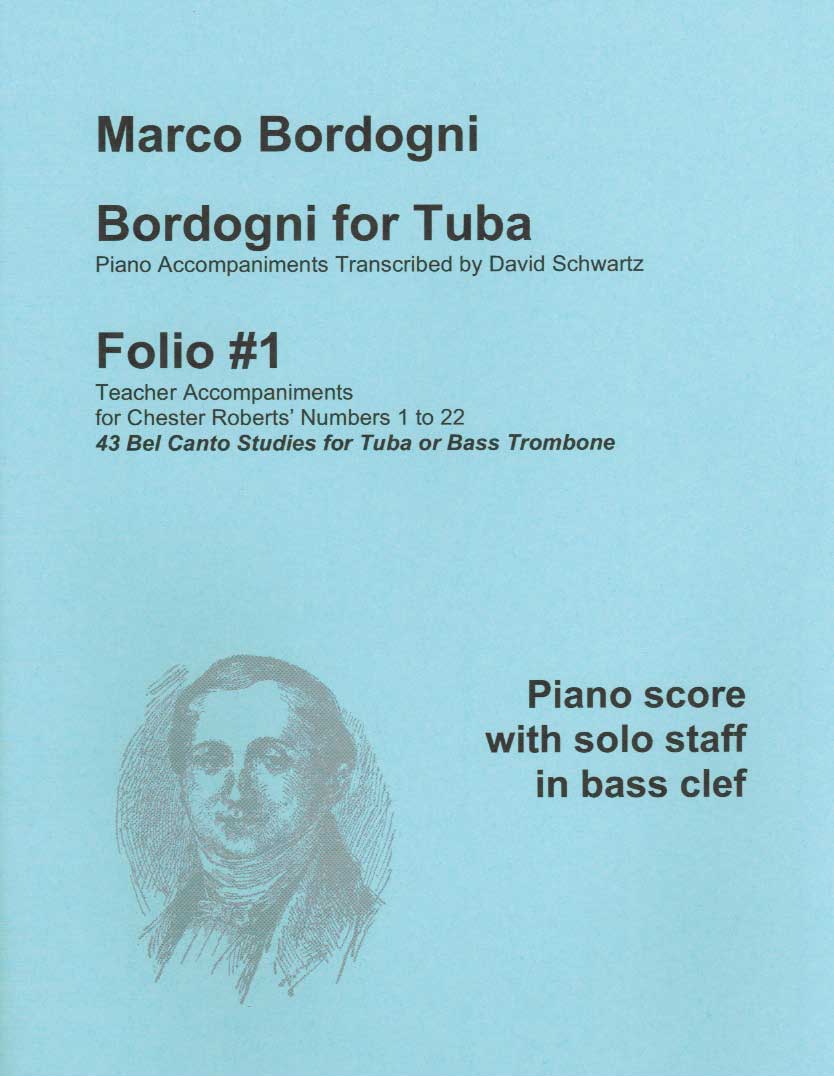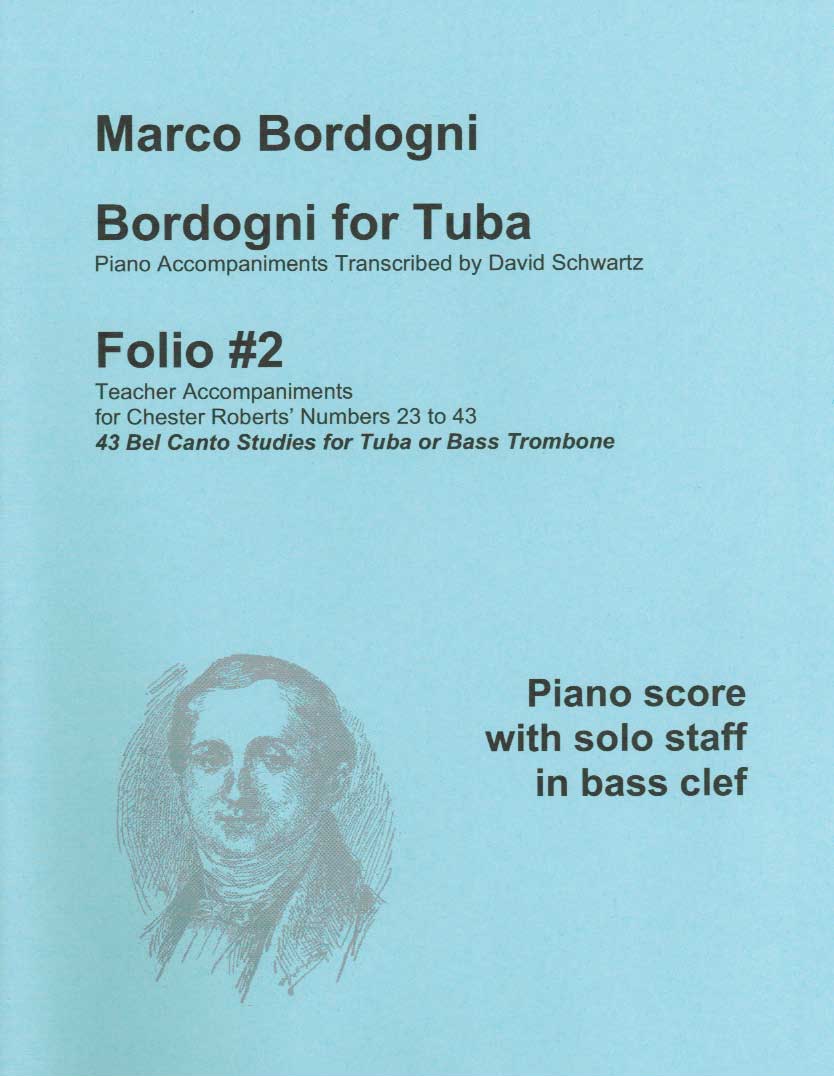 |
|
|
|
|
Vocalises by Giulio Marco Bordogni (1789-1856) in large, handsome books, together with audio compact discs of Bordogni's own piano accompaniments created by computer synthesis. Bordogni's simple accompaniments make practice more fun while helping improve rhythm, intonation, endurance, phrasing, articulation, breathing, and legato style.
Volume Descriptions
(Click any image to enlarge) |
 |
Volume One: 24 studies. Progressively arranged, these are the easiest of Bordogni's beautiful melodies. Includes audio compact disc with Bordgoni's teacher accompaniments. Bass clef. This volume is also available in tenor clef, spiral-bound; for low tessitura horn in F; for trumpet in B-flat; and, for alto trombone. in alto clef at pitches raised a perfect fourth (synthesized accompaniment). |
 |
Beginning in 2010 the Volume One companion disc (bass clef, tenor clef, B-flat trumpet and horn in F) provides an acoustic accompaniment performed on a Steinway grand piano by the brilliant Hanako Yamagata. |
 |
Volume Two: 12 studies. These studies correspond to Joannes Rochut numbers 46, 47, 48, and 52 through 60 in his Book I. Accordingly, students might want to study Volume Three before undertaking Volume Two. Includes audio compact disc. Bass clef. This volume is also available in concert pitch treble clef. |
 |
Beginning in 2010 the Volume Two companion disc (bass clef, concert pitch treble clef) provides an acoustic accompaniment performed on a Steinway grand piano by the brilliant Hanako Yamagata. |
 |
Volume Three: 24 studies. The middle, approximately, as found in Rochut Book I. Includes two audio compact discs. Bass clef. This volume is also available for trumpet in B-flat |
 |
Volume Four: 12 studies. Challenging etudes numbered 61 to 72 by Rochut. Includes audio compact disc. Bass clef. Also available in concert pitch treble clef, spiral-bound. |
 |
Volume Five: 12 studies. Challenging etudes numbered 106 and 110 through 120 by Rochut. Includes two audio compact discs. Tenor clef for Bordogni's keys, alto clef for Rochut's keys.
|
 |
Volume Six: 36 studies. The most challenging to perform and the most difficult to coordinate with accompaniments, these studies are numbered 74 to 109 (excluding 106) by Rochut, and there is one more study not transcribed by Rochut. The companion CD-R is a data disk with the music in MP3 files - over 3-1/2 hours of accompaniments. The CD-R includes ten accompaniments at slow, practice tempi, and seven accompaniments transposed to Rochut's keys. In addition, the CD-R includes PDF files with scanned images of Bordogni's own vocal-and-piano score and images of two 1897 G. Schirmer volumes edited by Max Spicker. 86 pages. Bass clef. Also available in concert pitch treble clef.
|
 |
Volume Seven: 12 duet vocalises. Not transcribed by Rochut, these challenging but beautiful duets are presented in tenor clef. Includes audio compact disc. The duet parts, in two separate folios, are suitable for concert or recital performance and are supported by a piano score published in 2010 and listed below as Accompaniments for Volume Seven - the duets. |
 |
Bordogni for Bass Trombone: 27 Selected Vocalises. These selections from the first three volumes are transposed into keys and ranges that are comfortable for bass trombone or for F-attachment symphonic tenor trombone. The companion CD-R provides two extra tracks with accompaniments at Bordogni's fast, vocal tempi. Another two tracks of brief tuning drones help with intonation. 34 pages. Bass clef. A companion piano score, Accompaniments for Bass Trombone, is available, 64 pages.
|
 |
Accompaniments for Rochut: Piano scores to accompany Joannes Rochut's 120 Melodious Etudes for Trombone from the Vocalises of Marco Bordogni (Carl Fischer, New York, 1928).
These volumes provide Bordogni's own teacher accompaniments with Bordogni's canto or vocalizzo staff in bass clef. The solo staff shows Bordogni's own phrase, articulation, respiration, tempo, and dynamic guidance, transposed to Rochut's keys.
Large 9-inch by 12-inch format. Suitable for studio and recital use. |
 |
Accompaniments for Rochut - details:
Folio #1 provides accompaniments for Rochut's numbers 2 through 20, 48 pages.
Folio #2 provides accompaniments for Rochut's numbers 21 through 40, 44 pages.
Folio #3 provides accompaniments for Rochut's numbers 41 through 60, 44 pages.
Together, the first three folios support the contents of Rochut's Book I.
Folio #4 provides accompaniments for Rochut's numbers 61 through 72 and numbers 74 through 90, Rochut's Book II, 88 pages.
Folio #5 provides accompaniments for Rochut's numbers 91 through 105, the first half of Rochut's Book III, 68 pages.
Folio #6 provides accompaniments for Rochut's numbers 106 through 120, the second half of Rochut's Book III, plus two additional Bordogni studies not included in Rochut's books, 72 pages.
|
 |
Accompaniments for Volume Seven - the duets: Piano score for Bordogni's twelve beautiful duet vocalises. The duo parts are combined in a single staff in treble clef for the convenience of the accompanist. New in 2010. Large 9-inch by 12-inch format. Suitable for studio and recital use. 55 pages.
|
 |
Bordogni for Tuba - Folio #1: Piano score to accompany Chester Roberts' 43 Bel Canto Studies for Tuba or Bass Trombone published in 1972 by Robert King Music Company. The solo staff shows Bordogni's own phrase, articulation, respiration and dynamic guidance, in bass clef, in the tuba range. New in 2010, this large 9-inch by 12-inch format book is suitable for studio and recital use. Folio #1 includes Roberts' numbers 1 through 22, 66 pages.
|
 |
Bordogni for Tuba - Folio #2: Piano score to accompany Chester Roberts' 43 Bel Canto Studies for Tuba or Bass Trombone published in 1972 by Robert King Music Company. The solo staff shows Bordogni's own phrase, articulation, respiration and dynamic guidance, in bass clef, in the tuba range. New in 2010, this large 9-inch by 12-inch format book is suitable for studio and recital use. Folio #2 includes Roberts' numbers 23 through 43, 67 pages.
|
|

More about The Bordogni Vocalises.
- Robert Lindahl has graded the Bordogni Vocalises in his Guide.
- Several prominent teachers and performers have written Comments.
|
|
Return to
the top of this page |
Return to Main Page |